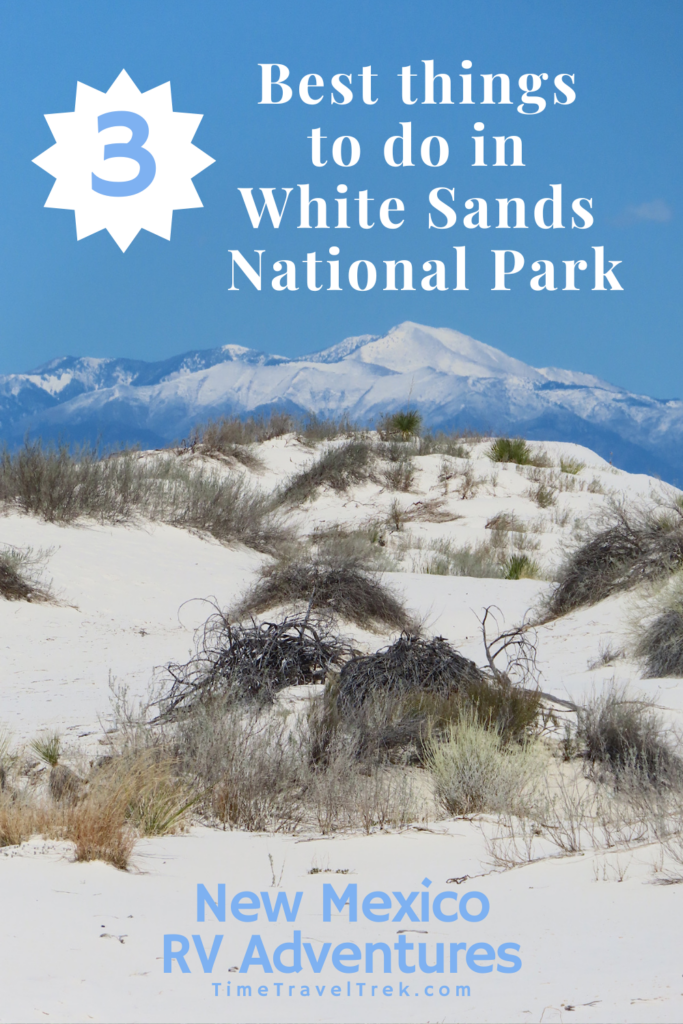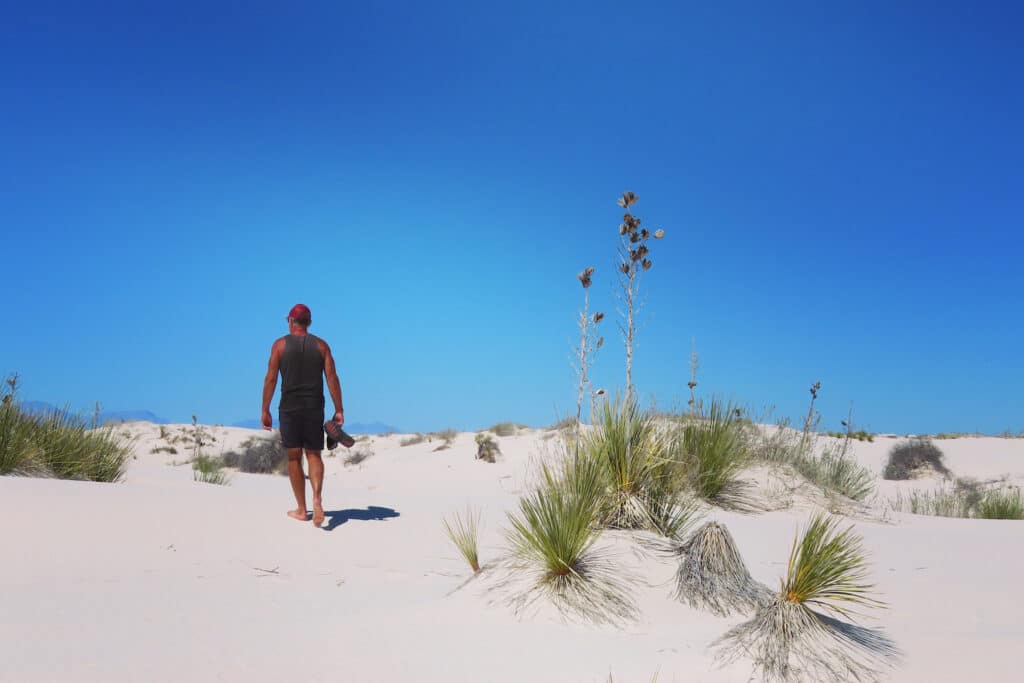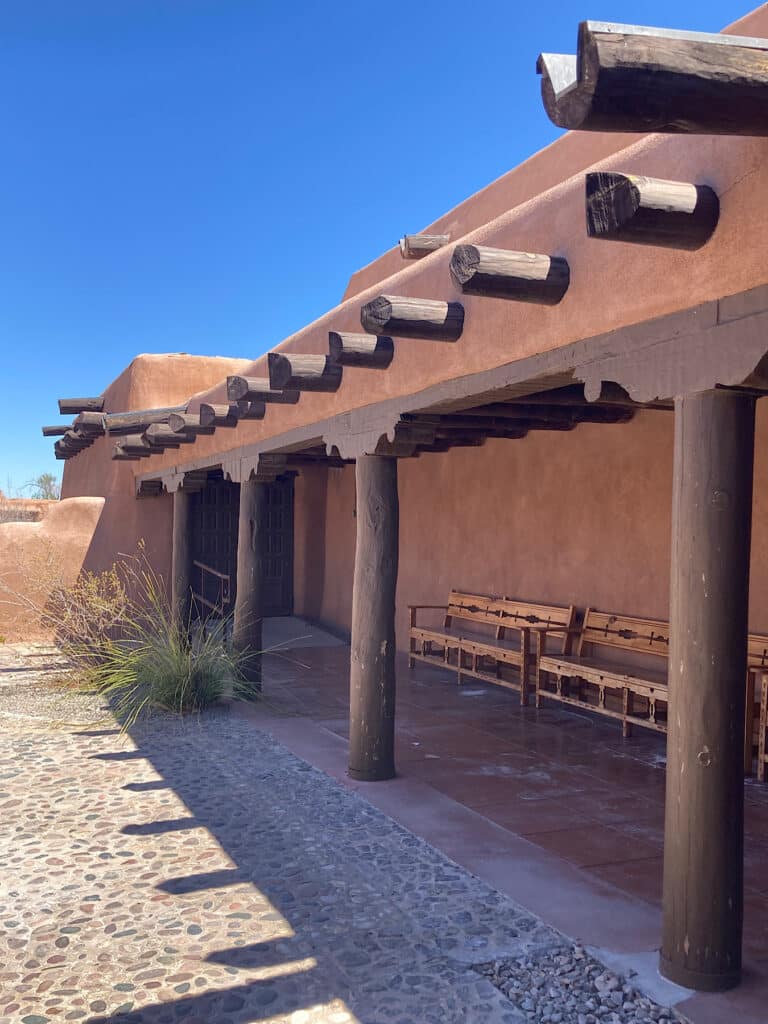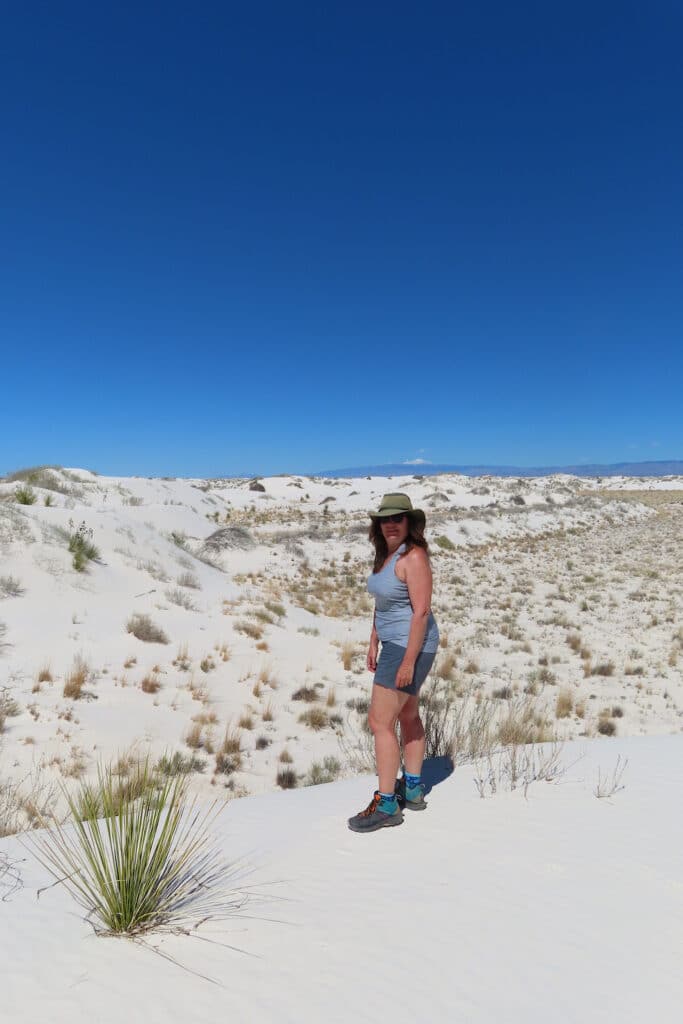Looking for the best things to do in White Sands National Park during your New Mexico RV adventure? Whether you’re just passing through or making a day trip out of it, this one-of-a-kind landscape offers plenty of ways to soak up its surreal beauty.
The dazzling dunes of White Sands aren’t your average sandpit — this place is pure magic. Picture an endless sea of soft, snow-white waves rippling across the desert under a deep blue sky. It’s the largest gypsum dune field on Earth, and once you see it, you’ll understand why more than 700,000 people visit every year!
Disclosure: This post contains affiliate links. If you buy something from one of our partners, we earn a small commission at no extra cost to you. Thanks for helping us keep the wheels rolling on TimeTravelTrek.com!
Table of Contents
What makes White Sands National Park so unique?
Tucked into New Mexico’s Tularosa Basin, White Sands National Park is a place that looks like a snow-covered desert, but don’t be fooled — this landscape is made of gypsum sand, not snow!
It covers 176,000 acres and stretches a jaw-dropping 275 square miles (712 sq km). What makes it even more mind-bending? It is estimated that there is enough sand in these dunes to fill 45 million railroad boxcars. Line those cars up, and the train would wrap around the earth more than 25 times! The dunes are so expansive they can even be seen from space, and some rise as high as 60 feet (18.3 m).
And even cooler than that? These dunes are less than 10,000 years old. Before that, prehistoric animals followed by hunters and gatherers wandered through the Tularosa Basin. Fossilized tracks and footprints – upwards of 23,000 years old – lie beneath the shifting sands!
In short: there’s no place on Earth quite like White Sands NP.
The 3 best things to do in White Sands National Park
1. Visit the historic Visitor Center
Before you dash off into the dunes, hit the park’s historic Visitor Center. Not only will you pick up maps, tips, and trail info, but you’ll also be stepping into a bit of architectural history.
This adobe-style building complex is a gorgeous example of Pueblo Revival architecture, crafted during the Great Depression by the Civilian Conservation Corps and Works Progress Administration. Designed by Lyle Bennett, who later left his mark on national parks across the Southwest, the center has stood here since 1938 — a living relic of both park and American history.
Fun Fact: Lyle Bennett also designed the Painted Desert Inn at Petrified Forest National Park and contributed to projects at Bandelier, Carlsbad Caverns, and Mesa Verde.
This is the perfect place to learn about the park’s geology, wildlife, and human history before heading into the dunes. Keep an eye out for the original signs still marked “Monument” — a nod to the park’s roots dating back to 1933 before it officially became a National Park in 2019.
2. Learn about White Sands National Park
Beyond the breathtaking scenery, White Sands offers layers of fascinating science and human history. Here’s what makes this spot more than just a photo op:
Geology
The surrounding San Andres and Sacramento Mountains shed gypsum into the Tularosa Basin every time it rains or snows. This water pools at the basin’s lowest point, Lake Lucero, where it evaporates, leaving behind selenite crystals. Over time, these crystals break down into the fine, snow-like sand that forms the dunes.
Ranger-led tours to Lake Lucero are offered seasonally, offering a rare look at the “birthplace” of the dunes. Check ahead — this unique hike is a bucket-list experience if the dates coincide with your visit!
Wildlife
White Sands isn’t just a sandy wilderness — it’s a surprisingly lively ecosystem! More than hundreds of animal species call the park home, including 45 found nowhere else on Earth, like the Apache pocket mouse and the bleached earless lizard. Fossilized prints of ancient creatures like mammoths, dire wolves, and giant sloths have also been discovered here.
While you probably won’t find fossilized tracks on your visit, watch for signs of current inhabitants!
Plant life
Plants play the role of unsung hero at White Sands, anchoring dunes and providing food and shelter for wildlife. As you explore, look for examples of 3 paths to plant survival in the shifting white sands:
- Reach tall like the soaptree yucca and grow above a dune’s surface (maintaining access to air and sunlight even as the dune grows).
- Grow fast like Indian ricegrass. Flower, seed and be done before the dunes close in.
- Hold on! Some plants – like the skunkbush sumac – survive by holding on to the dune with a dense network of roots. They create hard mounds called pedestals.
Human history
From Ice Age hunters to Spanish explorers, ranchers, and even military scientists, humans have left their footprints here — literally and figuratively — for over 20,000 years. It was just 65 miles (105 km) north of White Sands that the world’s first atomic bomb was detonated at the Trinity Site in 1945.
3. Take a walk in the dunes
You haven’t truly experienced White Sands until you step out onto the dunes. Start on the Dunes Drive, an 8-mile (13 km) scenic drive, leading from the visitor center into the heart of the dunefield. The first half of the drive is paved and the last 4 miles (6.5 km) are a hard-packed, gypsum road suitable for everything from motorcycles to RVs.

Now comes the fun part – pick a trail and start exploring!
- Dune Life Nature Trail: A short, 1-mile (1.6 km) loop where kids can follow animal tracks and spot desert wildlife.
- Interdune Boardwalk: An easy, wheelchair-accessible stroll with panoramic views of the gypsum sea and the Sacramento Mountains.
- Alkali Flat Trail: For the adventurous, this 5-mile (8 km) backcountry trail winds deep into the heart of the dunefield.
No matter which path you choose, take care not to lose the trail, carry water, and check the weather. Dunes can be disorienting, especially when the wind is up!
When Is the best time to visit White Sands National Park?
The easy answer? The best time is whenever you’re passing by on a New Mexico RV trip! But if you’re planning your trip ahead of time, spring and late fall are ideal for comfortable temperatures and smaller crowds.
- Spring (March–May): Wildflowers bloom and daytime temps hover around 70–80°F (21-27°C) . Be prepared for gusty winds that can reach 50 mph (80 kph).
- Fall (September–November): Crisp air and fewer visitors make for peaceful hikes. Watch forecast for heavy rains potential in early September. Temperatures are similar to spring but the weather can be unpredictable with occasional storms.

Plan your adventures with our 2026 RV Trip Planner available in our Etsy Printables Shop!
When you go
While there are no campgrounds inside White Sands National Park, nearby options make a great base:
- Edgington RV Park in Alamogordo (20 mi/32 km away)
- Oliver Lee Memorial State Park (27 mi/43 km away)
- Three Rivers Petroglyph Site (51 mi/82 km north) — perfect if you’re heading toward Santa Fe and want to see some prehistoric rock art!







Leave a Reply